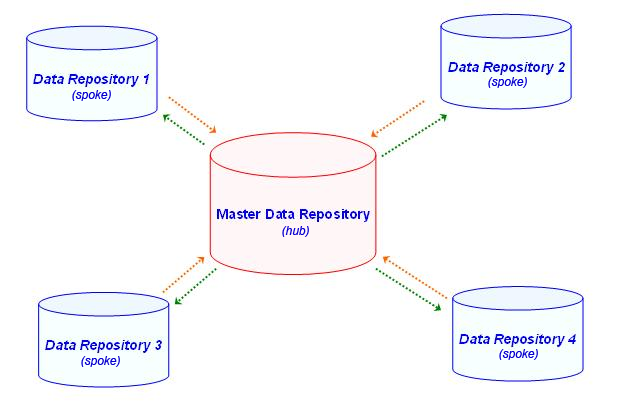Modeling Master Data |
|
The data of an organization can be effectively used only when the information is properly organized in multiple locations across the organization. Master Data Management (MDM) synchronizes the data between multiple storage locations or data stores.
In Process Platform, hub data store acts as the central source of accurate and consistent data (also called master data). Other data stores that must be synchronized should be connected with the hub data store.
Hub-and-Spoke Model
Process Platform uses the hub-and-spoke model in which hub acts as the central master data store that contains the master data. The other data stores that must be synchronized connect to the hub data store and form the spokes.
A spoke can interact only with the hub and the association between the spoke and the hub is called subscription. The model is graphically represented in the following image.

When a change is detected in the spokes, the changed data is sent to the hub data store which in tern sends the change to other subscribed data stores .
Thus, MDM provides a mechanism to synchronize the data changes across multiple stores in a cost-effective and reliable manner. The synchronization process can be customized depending upon the needs of the organization.
Data integration in Cordys MDM can be broadly classified as follows:
- Designing an MDM model
- Monitoring and Managing the MDM model
- Administrative tasks to ensure smooth data integration
Note: Before designing the MDM model, ensure that you create the data stores and the appropriate tables.
For additional information, refer to the following topics:
- For information on creating repositories and tables, refer to Preparing Master Data Repository
- For information on designing an MDM model, refer to Creating the Components of an MDM Model
- For information on MDM Administrative tasks, refer to MDM Admin Settings
- For information on monitoring MDM models, refer to Managing and Monitoring MDM.